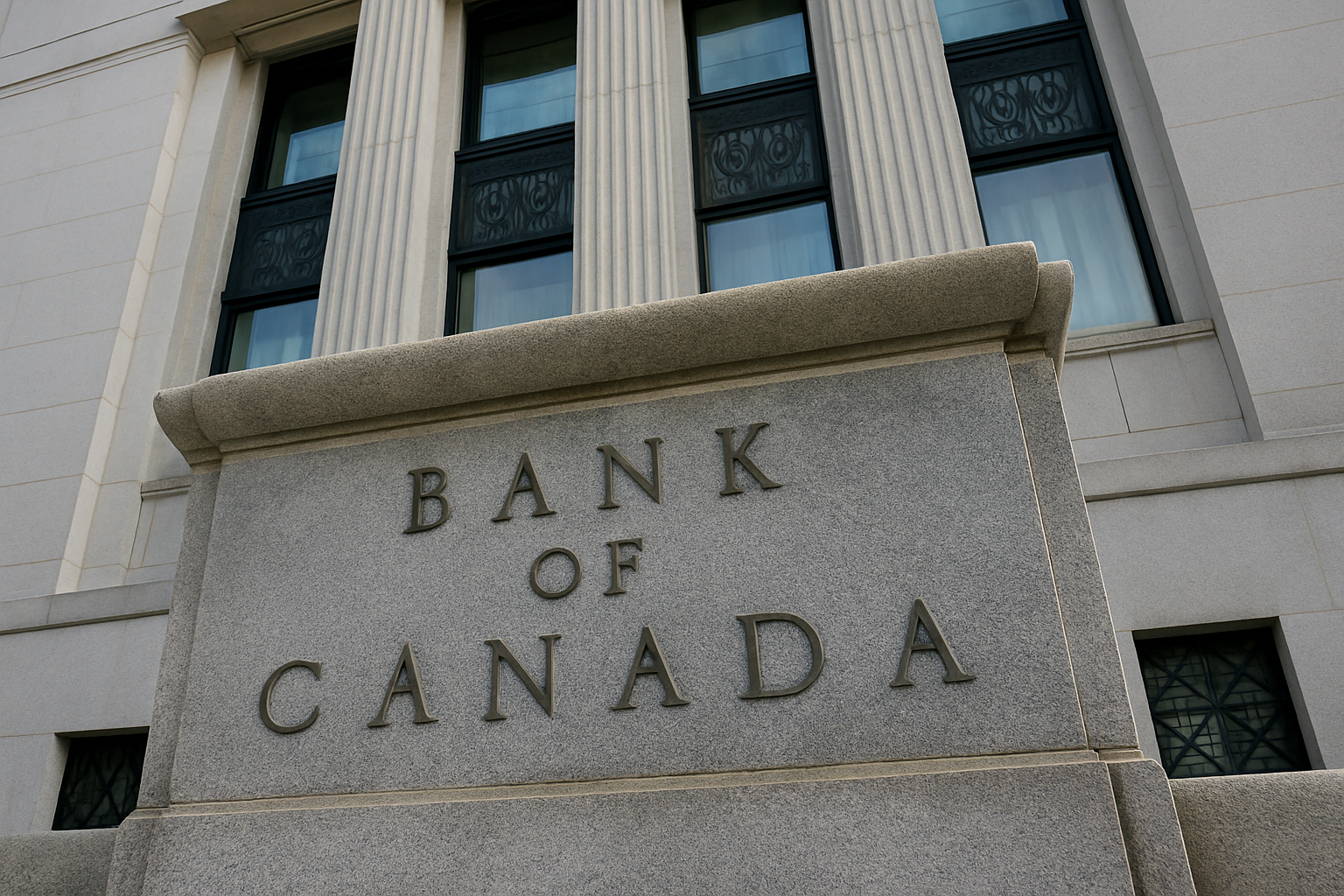Darryl Kraemer
Contact Info:
About

Explore Our Services
Preview Our Rates
Access all your mortgage options with just one application. Preview today's rates first:
Our Lenders

Blog

Renewing vs. Refinancing: How a Smart Refinance Can Save Over $50,000 in 5 Years — Even With a Higher Mortgage Rate
July 15, 2025
When your mortgage comes up for renewal, it’s easy to sign the lender’s offer—especially when it includes a lower rate than before. But if you're carrying high-interest debt, that lower rate might still be costing you tens of thousands of dollars.
Let’s compare renewing at 4.09% vs. refinancing at 4.44%, using a real-world scenario with credit card, loan, and line of credit debt on the books.
Meet Sarah: Mortgage Renewal + High-Interest Debt
- Current mortgage balance: $400,000
- Renewal offer from current lender: 4.09% fixed for 5 years
- Alternative refinance rate with new lender: 4.44% fixed for 5 years
- Other debts: $20,000 line of credit @ 9.50% $15,000 credit card @ 19.99% $15,000 car loan @ 7.99%
- Goal: Lower her total monthly obligations and reduce interest cost over time
Scenario 1: Renew at 4.09%, Keep Debts Separate
Sarah renews her $400,000 mortgage into a new 5-year term at 4.09%.
Mortgage Payment (25-year amortization): ~$2,123/month
Separate monthly debt obligations:
- Line of credit: ~$400
- Credit card (minimums + interest): ~$450
- Car loan: ~$475 Total non-mortgage debt payments: ~$1,325/month
Total Monthly Outflow: $2,123 + $1,325 = $3,448/month
5-Year Total Cost Estimate:
- Mortgage payments: $2,123 × 60 = $127,380
- High-interest debt payments: ~$79,500 (assumes slow repayment with significant interest over time)
Total Paid Over 5 Years: ≈ $206,880
Scenario 2: Refinance + Consolidate at 4.44%
Sarah refinances with a new lender, rolls the $50,000 debt into her mortgage, and secures a slightly higher rate at 4.44%.
New mortgage amount: $400,000 + $50,000 = $450,000 New mortgage payment (25-year amortization): ~$2,475/month
No more line of credit, credit card, or car loan payments.
Total Monthly Outflow: $2,475/month all-in
5-Year Total Cost Estimate:
- Mortgage payments: $2,475 × 60 = $148,500
Total Paid Over 5 Years: ≈ $148,500
Summary of Results
Key Takeaways
Even though Sarah’s refinance rate is 0.35% higher, she still comes out over $58,000 ahead over 5 years — with nearly $1,000 in monthly cash flow relief. That’s because mortgage debt is vastly cheaper than credit card, car loan, or unsecured credit.
Other Benefits of Refinancing and Consolidating
- One simple payment instead of juggling multiple lenders.
- Improved cash flow allows for emergency savings or investing.
- Stress-free debt repayment — no more aggressive credit card rates.
- Better credit utilization, potentially improving her credit score.
When Does Refinancing Make Sense?
Refinancing to consolidate debt makes the most sense when:
- You have $25K+ in high-interest debt
- Your mortgage is up for renewal (no penalty)
- Your home value has increased (so there’s equity to borrow against)
- You want to improve monthly cash flow or reduce financial stress
Even with a slightly higher interest rate on the mortgage, the interest savings and simplified payments often outweigh the rate difference.
What to Watch For
- Refinancing before maturity can trigger a break penalty (unless you're renewing).
- Extending your amortization could increase interest costs long-term—though this can be mitigated with prepayments or accelerated schedules.
- Always consider total cost, not just rate.
Conclusion
Sarah’s situation is not unusual. Many Canadians carry high-interest debt without realizing the power of a mortgage refinance. The key isn’t just getting the lowest mortgage rate — it’s optimizing your entire balance sheet.
Renewing at a slightly lower rate might feel like the “safe” option—but if you’re carrying high-interest debt, refinancing can dramatically reduce your overall payments, interest, and financial stress.
If you’re in a similar situation, reach out so we can run the numbers. A 30-minute conversation could lead to a 5-year savings of $40,000–$60,000+.

Refinancing Your Mortgage: When Does It Actually Make Sense?
June 09, 2025
With interest rates on the move and many homeowners feeling the pinch, refinancing your mortgage can be an innovative financial tool—but only if the timing is right. Here’s how to know when refinancing makes sense, and when it might not be worth the cost.
1. You Can Lower Your Interest Rate Substantially. If current mortgage rates are at least 0.75–1% lower than your existing rate, refinancing could save you thousands over your mortgage term, especially if you still have many years left.
2. You Need to Consolidate Debt. If you're juggling high-interest debt like credit cards or unsecured lines of credit, refinancing can help you consolidate into one lower monthly payment. This not only improves cash flow but can also simplify your finances.
3. You Want to Access Home Equity. Refinancing your home equity lets you use that capital for renovations, investments, or even purchasing additional property. Just make sure your new mortgage structure aligns with your long-term goals.
4. You Want to Change Your Mortgage Type or Term. Refinancing allows you to switch from a fixed-rate to a variable-rate mortgage or adjust your amortization period to fit a new budget or financial plan.
5. It’s Not Always the Right Move. Refinancing comes with costs: legal fees, potential prepayment penalties, discharge fees, and potential appraisal fees. Make sure the long-term benefits outweigh these short-term costs.
Reach out, and I can help you run the numbers objectively.

Why the Bank of Canada Isn’t Focused on Housing Prices (And What That Means for Rates)
June 04, 2025
Every time the Bank of Canada makes an interest rate announcement, there’s a wave of speculation—rate cut? rate hike? hold? But before jumping to conclusions, it’s worth stepping back and understanding why the BoC does what it does.
Here’s the key: when it comes to the overnight rate, the Bank of Canada has one core mandate—keep inflation between 1% and 3%, with a 2% target. That’s it. Their role isn’t to manage the housing market, support job growth, or stabilize the Canadian dollar. Their sole focus is inflation: where it is today, and where they believe it’s heading.
Recent Data Points: What’s Guiding Their Thinking?
Let’s look at what the BoC is seeing right now that led to their decision to maintain its overnight interest rate today at 2.75%:
1. GDP Surprised to the Upside Canada’s Q1 GDP came in at 2.2%—a much stronger number than many expected. While some of that strength may be temporary (companies restocking ahead of tariffs, for example), it still shows momentum. And with the economy growing, it’s hard to justify a rate cut. Many believe this growth is temporary, and future data will show an economy in decline.
2. Core Inflation Remains Stubborn While the headline inflation number dropped to 1.7%, core inflation—which strips out volatile items and is the BoC’s preferred measure—rose to 2.59%. That’s above target and moving in the wrong direction. For a rate cut to be on the table, inflation needs to show consistent, sustainable progress downward.
3. A Stronger Canadian Dollar The loonie has rebounded a bit in recent months. Cutting rates now would likely send it lower again. A weaker dollar increases the cost of imported goods, which can reignite inflation—something the BoC is actively trying to avoid.
What the Bank Isn’t There to Do
It’s important to remember: the Bank of Canada doesn’t set interest rates to influence real estate prices or provide relief for mortgage holders. That might feel frustrating, especially in a market that’s been correcting. But their job is to respond to economic data—not to proactively steer individual sectors of the economy.
The expectation that rate cuts should be used to “rescue” the housing market has grown in recent years, especially post-COVID. But central banks are meant to react to actual conditions—not speculative behavior. And while low rates during COVID may have conditioned Canadians to expect quick relief during downturns, that isn’t the norm.
Real Estate: A Market Finding Its Balance
We’re seeing a natural correction in real estate. Prices are softening, and sales are down. While this can be painful, especially for over-leveraged homeowners, it also creates opportunities for first-time buyers. What one seller loses, a buyer gains in affordability.
This transition may be uncomfortable, but it’s part of a healthier long-term reset. It allows inventory to move, wealth to shift, and future buyers to re-enter the market with more confidence.
Final Thoughts
The Bank of Canada will continue to follow the data. And unless inflation starts trending down consistently, particularly core inflation, rate cuts are unlikely in the near term. That said, as the economy continues to worsen, predictions are that at least two more rate cuts are forthcoming in the second half of this year. If you’re hoping for a quick drop in variable mortgage rates, staying grounded in the numbers that actually move policy is important.

Should You Use a Reverse Mortgage in Retirement?
May 13, 2025
As more Canadians approach retirement without full pension coverage and rising living costs, reverse mortgages are becoming an increasingly popular option. Sixty-seven percent of Canadian homeowners aged over 55 are concerned that, with the increase in the cost of living and inflation, their retirement savings will no longer be enough to maintain their lifestyle through retirement. Is a reverse mortgage the right move for you or your aging parents?
1. What Is a Reverse Mortgage?
A reverse mortgage allows homeowners aged 55+ to access up to 55% of their home’s equity as tax-free cash, without having to sell or move. No monthly payments are required; the loan is repaid upon the sale of the house or the homeowner's passing.
2. Who Should Consider One?
Reverse mortgages can be helpful for:
- Retirees who are house-rich but cash-poor
- Those who want to age in place
- Individuals looking to fund in-home care, renovations, or supplement income
- Those wanting to provide their children with a living inheritance to see them enjoy it while they are still alive
3. Pros and Cons to Consider
Pros:
- No required monthly payments
- Access to tax-free cash
- Can preserve other investments or RRSP's
- You still own your home
- Does not affect government benefits like CPP, GIS or OAS
- Home equity guarantee, ensuring that you will never owe more than your property’s fair market value
Cons:
- Interest compounds over time
- Reduces equity for heirs
- Higher interest rates than a HELOC or traditional mortgage
- Early repayment penalties may apply if you plan to sell your home soon
4. What Lenders Are Looking For
Reverse mortgages in Canada (such as those from HomeEquity Bank, Bloom, or Equitable Bank) evaluate:
- The value and location of the home
- The age of the homeowner
- Existing mortgage balances (if any)
5. Alternatives You Should Evaluate
Before deciding, consider:
- A HELOC (Home Equity Line of Credit) if you have enough income to qualify for one
- Downsizing if you don't want to age in place in your current home to free up cash flow and/or pay down debt
- Refinancing with a traditional mortgage if you are still working and can qualify
- Each option has different impacts on cash flow, estate value, and long-term financial planning.
Reach out if you have any questions or if you or someone you know would be a fit for a reverse mortgage. I'm always here to help!

Stay Connected
Stay in touch to ensure that you get the best rates, always!



